In recent years,
world hunger has gone through a global increase due to a number of factors—most notably, conflict, climate change, the leftover impact of COVID-19 and the rising cost of living across the world.
Majorly tied to the problem of hunger, food insecurity plays a big part in why the global hunger crisis has grown to what it is today. When nutritious food isn’t consistently accessible, a community or a household is food-insecure.
In this article, we will explore what causes food insecurity and how it impacts people all over the world.
- What is food insecurity?
- What causes food insecurity?
- How does food insecurity affect health?
- How does food insecurity impact Canadians?
- How does food insecurity impact low-income countries?
- How can I help end food insecurity?
1. What is food insecurity?
“Food insecurity” is defined as the inadequate or insecure economic and social circumstances behind why a community, household or individual is
unable to access or afford enough nutritious food for a healthy life.
While hunger and food insecurity are closely tied, they are defined differently, according to the FAO. “Hunger” refers to the discomfort or pain caused by not having enough food consumption. Hunger is one major result of being food insecure.
The Food and Agriculture Organization of the United Nations (FAO)
monitors food insecurity on a global scale using a tool called the Food Insecurity Experience Scale, ranging from mild to moderate to severe food insecurity. There are
2.4 billion people in the world who are either moderately or severely food insecure in the world, according to the 2023 State of Food Security and Nutrition in the World report.
Moderate food insecurity
Moderate food insecurity looks like having reduced quality and/or quantity of food, as well as an uncertainty in being able to get food because of a lack of income. A person with moderate food insecurity may have skipped meals or run out of food occasionally. Sometimes, in order to access food, many may be forced into dangerous or degrading work to gain income for food.
Severe food insecurity
On the extreme side, severe food insecurity looks like running out of food and going days without eating. This kind of food insecurity is what leads to hunger. Someone with severe food insecurity has fully run out of food and gone a day or more without eating.
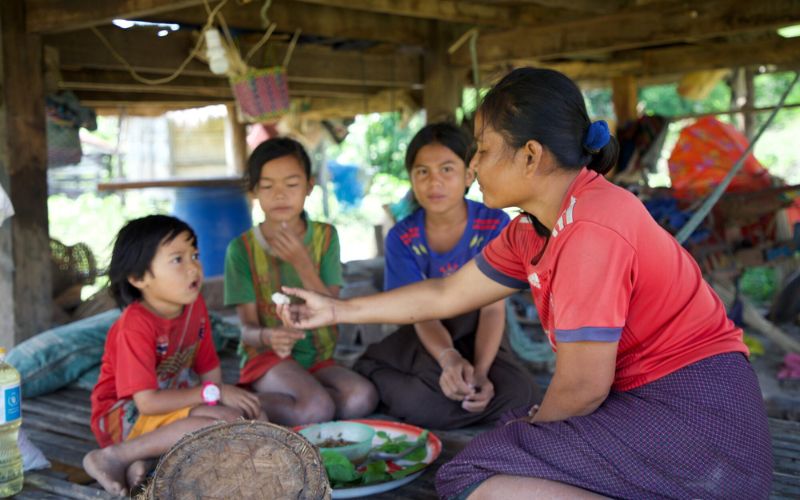 Families in rural communities, like this mother and her children in Laos, are often the most vulnerable to food insecurity. The isolation of rural communities can make it especially difficult to have consistent access to nutritious food. Photo: World Food Programme
Families in rural communities, like this mother and her children in Laos, are often the most vulnerable to food insecurity. The isolation of rural communities can make it especially difficult to have consistent access to nutritious food. Photo: World Food Programme
2. What causes food insecurity?
While food insecurity is a complex issue, there are a few major factors causing it to rise
all over the world. Here are the main contributors to global food insecurity, according to the 2023 Global Report on Food Crises.
Conflict
Conflict has consistently been a major driver of food insecurity in countries classified as experiencing severe food insecurity. Countries facing acute food insecurity are also often affected by
ongoing violent conflict, such as Afghanistan, South Sudan and the Syrian Arab Republic.
When conflict happens in a region, control over resources such as food and water, alongside infrastructure for supplying food, gets severely impacted. Conflict also often leads to displacement, which is both a consequence and driver of food insecurity.
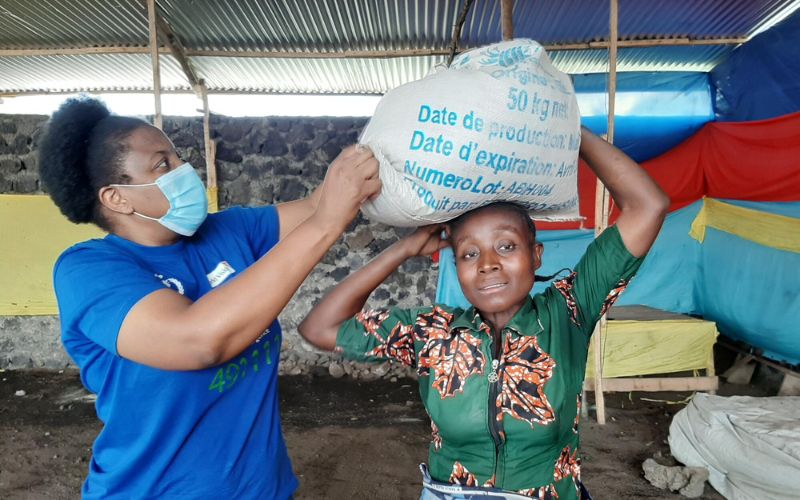 In Sake, Democratic Republic of the Congo (DRC), this woman is receiving food supplies from the World Food Programme and UNICEF. The DRC has been facing a complex and prolonged humanitarian crisis. A recent surge of violence has led to a rise in food insecurity and displacement. Photo: Geoffrey Denye
Economic shocks
In Sake, Democratic Republic of the Congo (DRC), this woman is receiving food supplies from the World Food Programme and UNICEF. The DRC has been facing a complex and prolonged humanitarian crisis. A recent surge of violence has led to a rise in food insecurity and displacement. Photo: Geoffrey Denye
Economic shocks
Economic shocks play the biggest role in driving food insecurity in almost all affected countries. As global inflation rises, affording basic food staples has become more difficult for many communities. Low-income countries now have less economic resilience, facing longer recovery periods and less ability to cope with future shocks. The socioeconomic impact of COVID-19 and the repercussions of the
conflict in Ukraine have both contributed to the rapidly rising cost of living.
Climate change
From sustained drought in the Horn of Africa to major floods in southeast Asia, extreme weather events severely affect communities’ conditions for producing food. If people cannot produce or access food because of their environment, they are
often forced to migrate in search of food. For example, an ongoing drought on Somalia pushed many out of their homes and into camps for displaced people as they look for food.
3. How does food insecurity affect health?
Food insecurity impacts health in a variety of ways, from physical to psychological ways.
Malnutrition
A major result of food insecurity is
malnutrition, a condition that happens when people—particularly children—are unable to get the nutrients they need to grow and develop in a healthy way. As a result, they may experience symptoms of wasting or stunting. Malnutrition in children may lead to reduced physical and mental capacity as well.
Lower immune system
Without consistent intake of nutritious food, people in food-insecure households are more likely to experience infectious diseases, heart disease, poor oral health and hypertension, among other illnesses.
Chronic health issues
When people experience food insecurity, they have
less resources to manage chronic health conditions. This often leads to increased healthcare use and spending because of worsening health. Food-insecure people may also struggle with adhering to therapeutic diets or forced to forgo necessary prescription medications because they cannot afford them.
Mental health
Food insecurity and mental health are
closely linked together. There’s a higher risk of experiencing depression, mood disorders, anxiety disorders or suicidal thoughts with those in severe food-insecure households, according to food security research group PROOF.
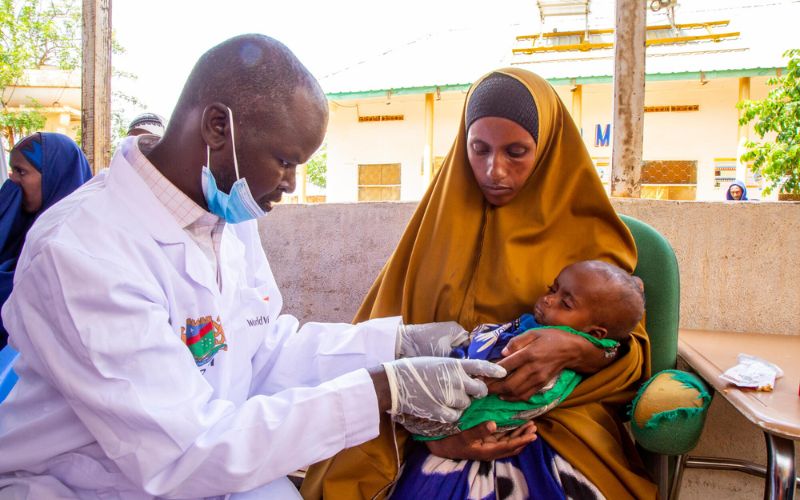 In Baidoa, Somalia, this child is being assessed and treated for severe malnutrition. Families in the country struggle to fight malnutrition due to an ongoing drought, forcing many to leave home in search of food. Photo: Gwayi Patrick
In Baidoa, Somalia, this child is being assessed and treated for severe malnutrition. Families in the country struggle to fight malnutrition due to an ongoing drought, forcing many to leave home in search of food. Photo: Gwayi Patrick
4. How does food insecurity impact Canadians?
Food insecurity isn’t just a battle we’re fighting abroad. It’s present on Canadian soil and in our local communities, particularly in Northern Canada.
Canada is among the world’s wealthiest nations. Yet in 2022, according to Statistics Canada, 18.4 per cent of people in the 10 provinces lived in
a food-insecure household. That amounts to about 6.9 million people, including almost 1.8 million children.
Both before and during the pandemic, certain population groups were more vulnerable to food insecurity in their household. They included:
- people with lower levels of education,
- those who rent their dwelling,
- those in lone-parent-led households and
- those in households reliant on social assistance as their primary source of income.
Indigenous people and food insecurity
Across Canada, Indigenous people are more likely to be food-insecure than Canada’s overall population. Even before the pandemic, the proportion of Indigenous people with moderate or severe food insecurity was
more than double that of the overall population, according to Statistics Canada.
During the pandemic, the
Canadian government responded to
heightened food security concerns in Indigenous communities.
Soaring food prices
February 2022 recorded the
largest year-over-year inflation rate increase since August 1991 at 5.7 per cent, causing price surges for groceries, as well as the costs of shelter, energy and other necessities. With households finding it increasingly difficult to afford food and other basic needs, food insecurity is certainly a cause for concern for many Canadians.
Geographic disparities
Remote Canadian communities are far more likely to be vulnerable to food insecurity. In 2020, the food insecurity research group PROOF noted that
Nunavut is particularly vulnerable. The group stated that “57 per cent of households in Nunavut reported some level of food insecurity and almost half of these households were severely food insecure (meaning that members experienced absolute food deprivation).”
Despite food programs like
Nutrition North that aim to provide better access to nutritious, affordable food in remote areas, food insecurity is still a rising problem in many remote communities.
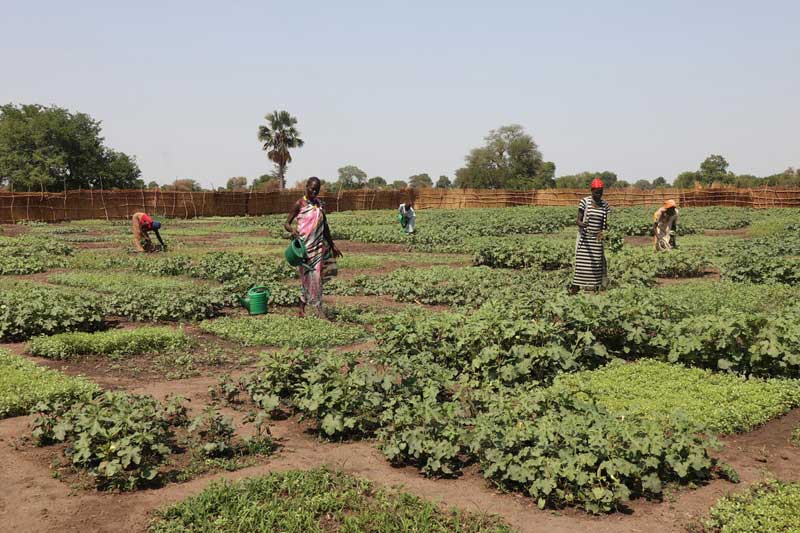 Farmers in South Sudan receive training from World Vision Canada on growing food-producing plants throughout the year and not just during the rainy season. Photo: Scovia Faida Charles
Farmers in South Sudan receive training from World Vision Canada on growing food-producing plants throughout the year and not just during the rainy season. Photo: Scovia Faida Charles
5. How does food insecurity impact low-income countries?
Consider the issues standing in the way of food security in Canada, then add the strain of armed conflict, climate crisis and economic and political instability. In many parts of the world, these are the
main drivers of hunger and food insecurity.
By May 2022, the crisis in Ukraine was drastically affecting the country’s ability to export life-saving grains to hundreds of millions of people worldwide. Grain exports from Russia were also down. Both factors had a significant impact on the growing global crisis in many countries.
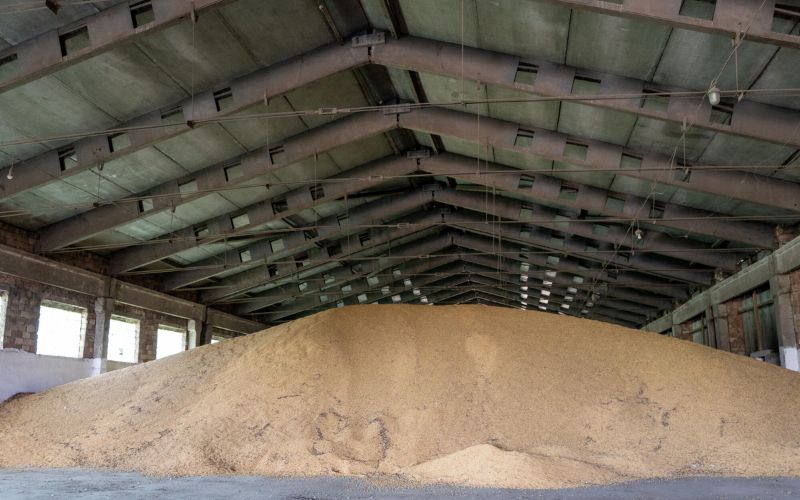 In western Ukraine, this barn filled with soya beans for shipment was just one storehouse of food that had nowhere to go during the beginning of the conflict in Ukraine. Known as the “breadbasket of Europe,” Ukraine was a major source of much-needed food supplies to low-income countries. Photo: Paul Wu
In western Ukraine, this barn filled with soya beans for shipment was just one storehouse of food that had nowhere to go during the beginning of the conflict in Ukraine. Known as the “breadbasket of Europe,” Ukraine was a major source of much-needed food supplies to low-income countries. Photo: Paul Wu
But even before 2022, hunger levels had surpassed all records previously reported by the Global Report on Food Crises. Regions at greatest risk were those already
facing multiple threats, like climate change, violent conflict and political and economic turmoil. Some examples: the Democratic Republic of the Congo, Afghanistan, Ethiopia, Yemen, Nigeria, Syria, and South Sudan. (In many high-hunger countries, armed conflict is the primary driver of food crisis.)
6. How can I help end food insecurity?
Food insecurity is a problem that can’t be tackled by just one person or even one country. It takes a global effort to ensure everyone everywhere has consistent, stable access to nutritious food. Here are a few ways you can help reduce food insecurity in your region and abroad.
Grow your own food—and share it
Community gardens are a small but significant way to fight food insecurity in your area. These gardens give people the chance to have
control over the food they consume in a practical way. Gardeners in community gardens work together to maintain the space, even donating portions of their harvests to local food organizations.
Support local food charity and advocacy groups
While food banks aren’t a long-term solution to food insecurity, they are an important
emergency source of food for those who need it. If you have extra cash or time, consider buying extra groceries to give to your local food bank or organizing a food drive with friends to gather donations.
On the long-term side, there are a variety of advocacy groups around the world and in Canada—including World Vision—focused on advocating for food security. These groups
research and advocate for local and national policies to support stronger food security in communities. Spreading the word about their work or giving towards their research helps the cause.
Give towards global efforts to fight hunger
It takes long-term efforts to end food insecurity in vulnerable communities. World Vision has been on the frontlines of the global hunger crisis for decades. Your support towards our
global hunger crisis response, existing programs aimed at improving
families’ livelihoods or providing
emergency food supplies can go a long way.